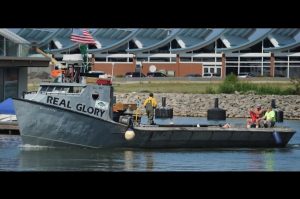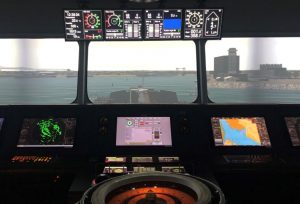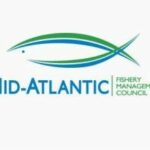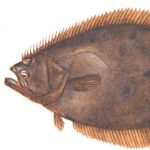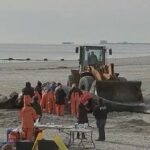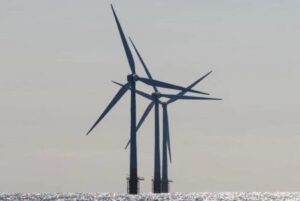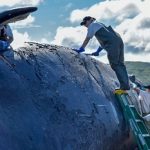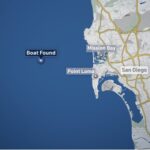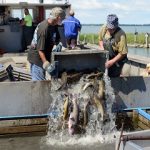Tag Archives: Large Whale Take Reduction Team
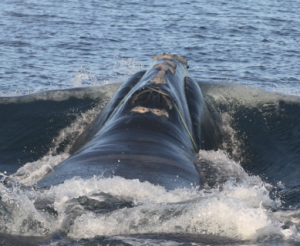
Southeastern fishery closures floated for 2023 federal right whale rule
Don’t call them “proposals,” but four draft packages arose this week in high-level brainstorming sessions among scientists and fishers on the National Oceanic and Atmospheric Administration’s Atlantic Large Whale Take Reduction Team. The task force’s purpose is to lead the effort to save North Atlantic right whales from extinction. The ultimate goal is a 90% risk reduction to North Atlantic right whales in U.S. waters. “It’s mandated by the Marine Mammal Protection Act, so this isn’t optional,” said Colleen Coogan, branch chief for the Marine Mammal and Sea Turtle Team in the Protected Resources Division of the NOAA Fisheries Greater Atlantic Regional Fisheries Office. “This is a legal mandate.” >click to read< 10:01

Golden asks for more lobstermen on panel
U.S. Rep. Jared Golden (ME-02) called on the National Marine Fisheries Services March 16 to expand representation of lobstermen on its Atlantic Large Whale Take Reduction Team by including members of Maine Lobstering Union Local 207. The Atlantic Large Whale Take Reduction Team is charged with making recommendations to the National Oceanic and Atmospheric Administration for addressing rising North Atlantic right whale mortalities. Only four of the members of the 60-person team are Maine lobstermen. >click to read< 17:46
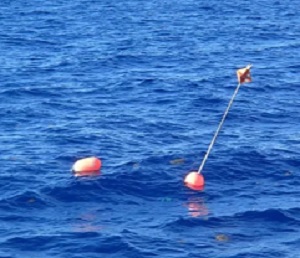
Second phase of regulation changes to protect North Atlantic right whales include groundfisheries
The federal Large Whale Take Reduction Team instituted sweeping changes in the rules governing the Northeast lobster and Jonah crab fisheries to help reduce gear entanglements. Now, the team is turning its attention to other fisheries in the Northeast and Mid-Atlantic The second phase is expected to significantly impact a number of commercial gillnet fisheries in New England and elsewhere along the East Coast, including monkfish, spiny dogfish, skate and other groundfish fisheries. The second phase also will address trap/pot fisheries not covered in the first phase, including Atlantic deep-sea red crab, slime eels, black sea bass, shrimp, scup and others. >click to read< 18:25
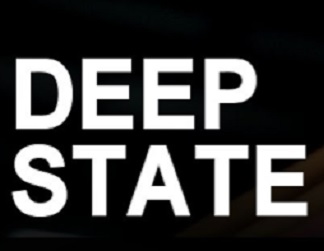
Letter: NOAA just another deep state bureaucracy
Stephen Rappaport’s Nov. 28 article “Scientists review divisive whale risk reduction model” indicates to me that NOAA has become just another deep state bureaucracy with a political agenda rather than a fact-finding, scientifically based regulatory agency. Its Large Whale Take Reduction Team (TRT) proposes a 50 percent reduction in lobster trap to buoy vertical lines. The TRT includes nearly 60 members as follows: by Dudley Gray >click to read< 10:32

Herring cuts another headache for lobstermen
Maine lobstermen are catching it coming and going, but the “it” ain’t lobsters. Last month, the lobster industry found itself confronted with a demand from federal fisheries regulators that it reduce the risk it posed to endangered right whales by 60 percent and began the arduous task of figuring out how to remove half the vertical buoy lines attached to lobster traps from the water. Though it came as no surprise, earlier this month the New England Fishery Management Council announced that the already scant amount of herring allowed to be caught off the coast of New England would be further reduced in 2020 and 2021. >click to read<11:34
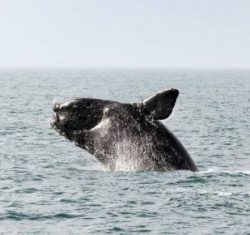
Whale protection, trawl limits entangle Zone C lobstermen
October is a peak month, according to the state Department of Agriculture, Conservation and Forestry, for feistiness in Maine’s population of hornets and wasps. Lobstermen too, judging by last week’s meeting of the Zone C Lobster Management Council at Deer Isle-Stonington High School.,, While the trawl rule was at the forefront of last week’s debate, lurking just below the surface was a technical memorandum issued late last month by the NOAA Fisheries Northeast Fisheries Science Center. >click to read<11:49

Gear is in wrong place for right whales, scientists say
Speaking at the Maine Fishermen’s Forum on Friday,,, The NOAA Fisheries Large Whale Take Reduction Team recently established separate working groups to study two proposals to reduce the risk of entanglement: splicing several 1,700-pound breaking strength “weak link” sleeves into vertical lines such as those that connect lobster buoys to traps; and removing those ropes altogether by requiring the use “ropeless” fishing gear. Those working groups will focus on whether either solution is technologically feasible, whether it will actually work for fishermen, and whether it can be cost effective for fishermen.,, >click to read<10:32
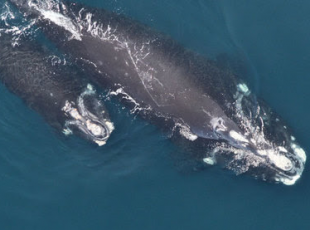
Right whale deaths spur regulators to eye fishing gear modifications
This has been a tough year for North Atlantic right whales. Late in October, according to the International Fund for Animal Welfare, the badly decomposed carcass of a right whale was found ashore on Nashawena Island, south of Cape Cod in Massachusetts. It was the 16th of the highly endangered species known to have died in U.S. or Canadian waters in 2017. Starting in the early spring and continuing through the late summer months, a dozen dead right whales were found floating in Canada’s Gulf of St. Lawrence.,,, Last year, the NOAA Fisheries Large Whale Take Reduction Team (TRT) began a five-year review click here to read the story 08:23

































